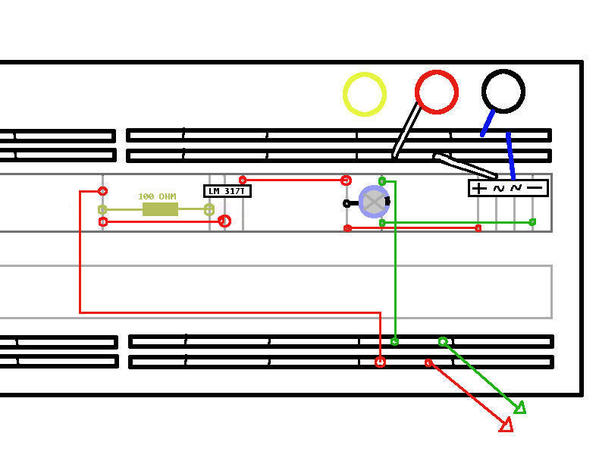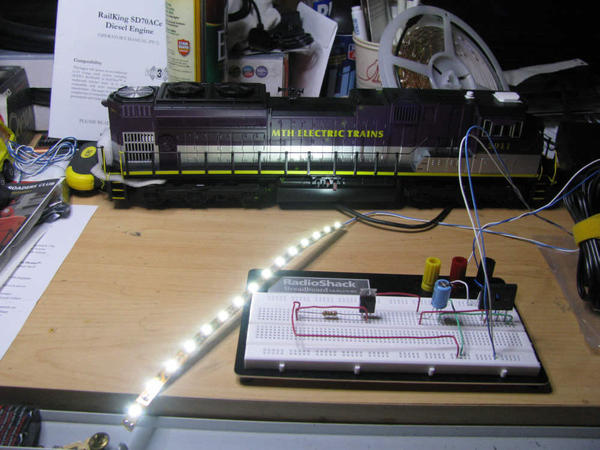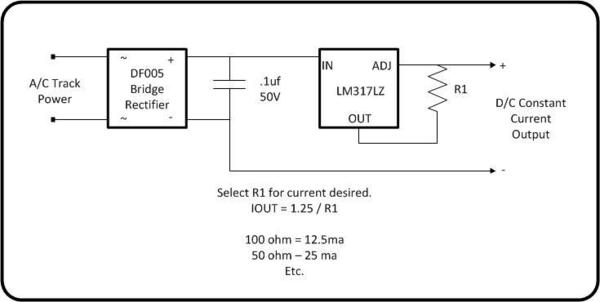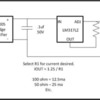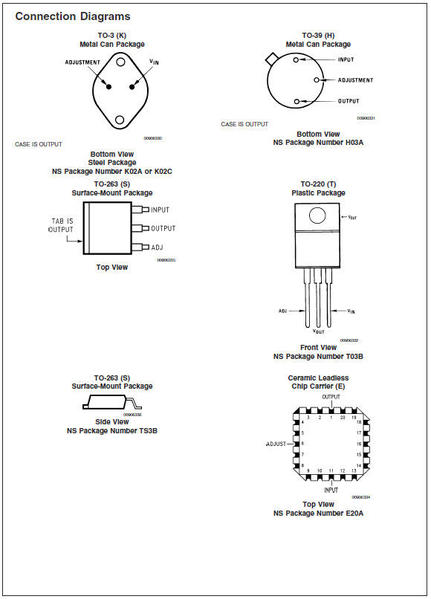Originally Posted by RailRide:
(one thing I don't think I got answered is, does the wattage ratings matter on the resistor? The one linked above is 1-watt (I backed off the resistance slightly))
In your LM317T configuration, the voltage across the resistor is 1.25V. Since Power = V x V / R, the power for a 330 ohm resistor is only 0.005 Watts. The SMT resistor suggested earlier has a rating of 0.125 Watts. You don't need a 1 Watt resistor there. Also, the resistor is a 0805 type which is 0.08" x 0.05 inches. I suggest 0805 because the leads between the LM317T are exactly 0.1". So as the photo shows, the 0.08" length of an 0805 resistor makes for a tidy assembly job.
If the inductor is the only thing you're ordering from All, then consider this 17 cent inductor from DigiKey. If you do eBay, I recall another thread on an LED conversion asking about inductor specs and he ended up getting them for IIRC 5 or 10 cents each in small quantity (free shipping but delay from Asia).
If you plan to do more electronics tinkering, considering the $9 shipping charge, Future has some nice pricing on semiconductors if you can navigate their site. For example, the 1N400x diodes for 2 cents in small quantity. Or the 555 timer chip for 15 cents in small quantity. I'd say these are in the top few parts that come up this forum.
![]()
![]()






